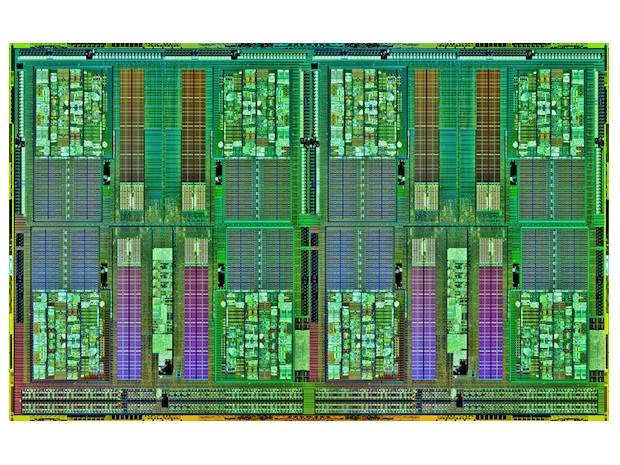AMD announced today the immediate launch and availability of its Opteron 6200 and 4200 series of Bulldozer-based server processors, previously codenamed Interlagos and Valencia, designed for Socket G34 and C32 motherboards respectively.
The new silicon offers exceptional value for money for those that need the horse-power, with AMD claiming up to 84 per cent greater performance and 73 per cent greater memory bandwidth for its Operton 6276 when benched against the Intel Xeon X5670, made possible thanks to the Inerlagos' monstrous, hexadeca-16-core design. Quite rightfully, by cramming such performance in to a single chip, cost effectiveness for large server farms goes through-the-roof as you require fewer racks to achieve comparable performance, with AMD also claiming that the technology requires two third's less floor space and money, in comparison to the Intel Xeon 5600 series.
AMD is also claiming the greatest performance-per-core with its 4200 EE series. The math works out at 4.375W per core, with the lowest comparable Intel server offering at 10W per core, the Xeon L5630. The firm has also announced that the new line of Opterons are the only server processors currently supporting ultra-low 1.25v memory.

Initial pricing appears more than competitive, with, for example, 1k unit costs for the AMD Opteron 6276 at $788, compared to $774 for an Xeon E5640. AMD's frontrunner will be the Opteron 6282 SE 16-core, 4-way Interlagos Bulldozer, clocking in at 2.6GHz per core, with a turbo frequency of 3.3GHz, 16MB level three cache and a 140 Watt TDP, with a 1k unit cost of $1019.
It's about time to see AMD's Bulldozer architecture finally do what it was made for, which as we've always suspected, is highly-threaded server work; with AMD's initial figures seeming to show that it does this job exceptionally well. This new product line does, however, give us an interesting insight into the large scalability of the Bulldozer design in general; proof that it can utilise low-power memory, range from 4 to 16 cores, scale from TDPs of 35W to 140W and from previous over-clocking evidence, scale incredibly well from low high-core-count server frequencies up to record-breaking single module frequencies. Along with our prior post on scheduler performance optimisations, perhaps this all shows that there's plenty more left to come out from the Bulldozer architecture.
Stay tuned.













